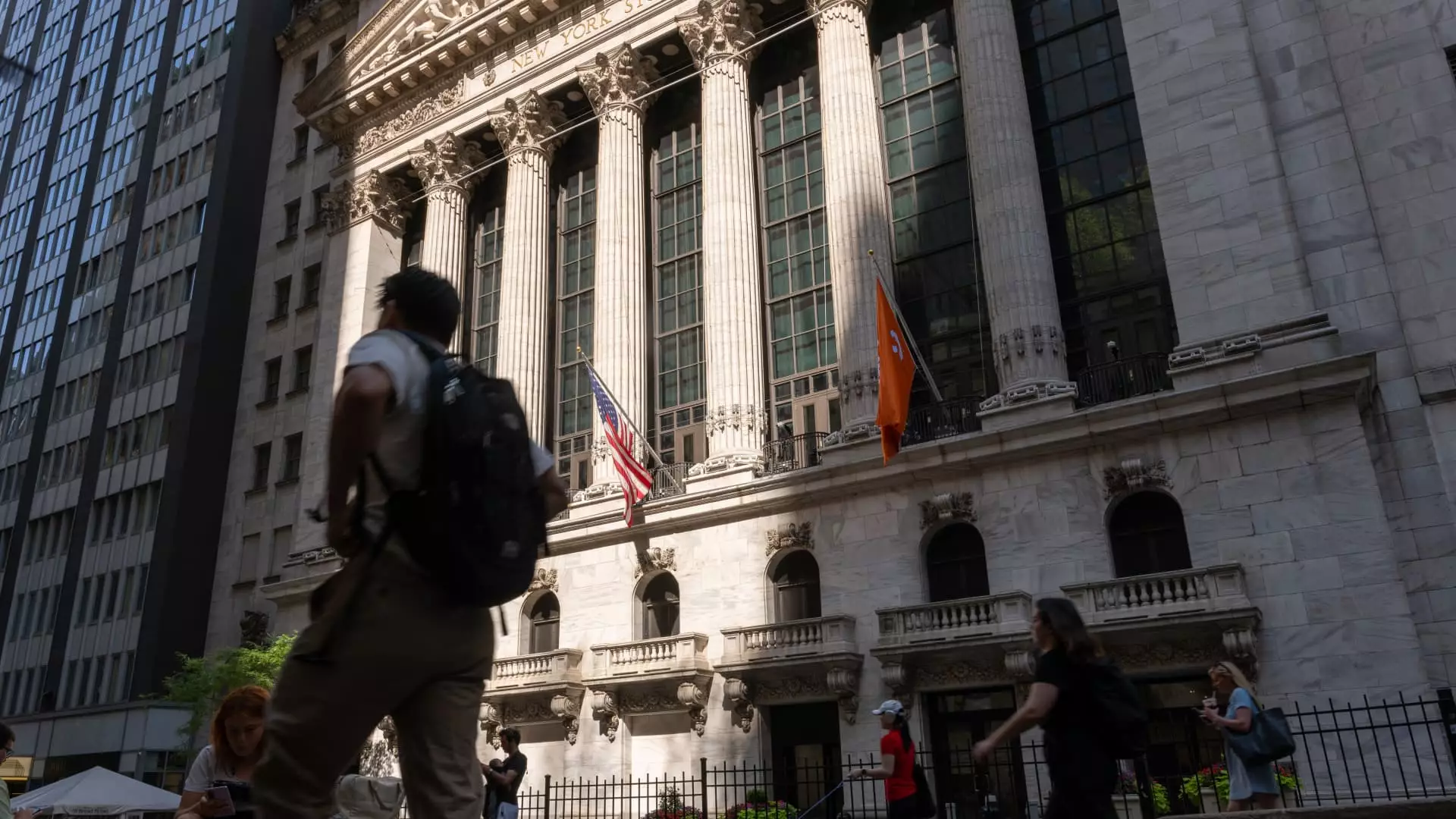The realm of mergers and acquisitions (M&A) is often a barometer for economic activity, responding swiftly to shifts in political and regulatory environments. Initially, 2023 promised a vibrant M&A landscape, buoyed by pro-business sentiment from the Trump administration. However, this optimism colluded with abrupt market volatility triggered by aggressive tariff policies, sending shockwaves through the financial sector. The immediate impact of this political maneuvering was undeniable: a drastic reduction in deal activity across the board.
The appetite for M&A dwindled significantly in response to these tariffs, akin to a sudden freeze in a once-thriving ecosystem. Yet, recent developments indicate a rekindling of optimism among dealmakers. The dollar values reflecting U.S. mergers and acquisitions were in turmoil, oscillating dramatically as markets reacted to the shifting sands of trade policy. In March, an impressive $227 billion was recorded in deal value—with 586 active transactions. The subsequent months saw a gut-wrenching drop, but signs of life are emerging once again in this crucial sector.
Factors Affecting Market Sentiment
Those involved in M&A are now cautiously optimistic. The sight of vibrant equities markets and a clearer regulatory picture is fostering a tentative recovery, albeit with caveats. Analysts like Kevin Ketcham underline the importance of stable borrowing costs, as elevated interest rates have substantial ramifications on financing, inevitably leading to less favorable conditions for both buyers and sellers. In an environment where businesses are still grappling with the repercussions of tariff-induced anxiety, it is no wonder that analysts believe activity in specialized M&A—deals characterized by motivated sellers and flexible structures—will gain traction.
The landscape is evolving, revealing a divergence in what companies seek from the M&A process. The rise of “special situations” indicates a pivot from larger, more traditional transactions towards smaller deals that align better with current market uncertainties. Investors seem increasingly wary, and while larger enterprises with robust financial health may hold off on significant deals, smaller players appear more willing to negotiate. Amid these conditions, the focus has shifted to more tactical transactions that could potentially yield profits without overwhelming risk.
The Uncertain Path Forward
The political machinations surrounding tariffs reflect the uncertainty that defines today’s market. In the early days of the Trump tariffs, anticipation gave way to immediate disillusionment; deal activity plummeted a staggering 66% in the first week of April. However, a delicate resurgence seems to be brewing in mid-May, suggesting that firms are re-evaluating their strategies in response to an evolving economic landscape.
Corporate giants like Kraft Heinz have begun signaling a shift in their approach to M&A. Instead of a blanket moratorium on deal-making, some companies are adapting by seeking smaller acquisitions that can augment their core offerings. For instance, PepsiCo’s recent purchase of Poppi—a novel prebiotic soda brand—exemplifies the growing trend of maneuvering within niche markets that hold potential for growth, even amidst broader economic caution. These companies are taking proactive steps to safeguard their positions, an approach that’s commendable given the broadening challenges presented by fluctuating market conditions and global trade dynamics.
Industry Leaders and Their Moves
The ongoing turmoil has not deterred all dealmakers from pursuing growth opportunities, particularly within sectors like technology and consumer goods. Major transactions have recently dotted the landscape, such as Google’s eye-popping $32 billion acquisition, showcasing that even amidst uncertainty, ambition remains a driving force. The underlying sentiment is one of resilience and adaptability, with corporations maneuvering to find their footing in the aftermath of disrupted financial conditions.
As the example of Dick’s Sporting Goods acquiring Foot Locker illustrates, significant transactions are becoming commonplace once more, with analysts suggesting that this trend is not an anomaly but rather indicative of a broader movement in the industry. Companies are breaking down barriers as they adapt to changing consumer behavior, economic anxieties, and regulatory complexities.
In sum, while the M&A field faces undeniable challenges, the recent uptick in activity and the willingness of companies to forge onward reflects an essential pivot. The world of mergers and acquisitions may be fraught with uncertainty, but the persistence and agility that characterize industry players paint an encouraging picture. This moment could very well represent not just a resurgence, but an evolution in how businesses navigate the intricate dance of growth through partnerships and acquisitions in challenging times.

